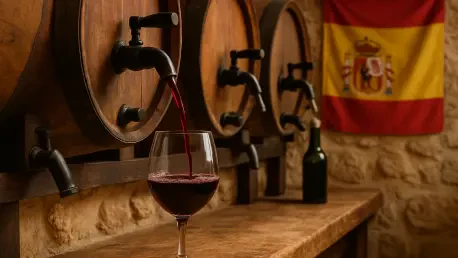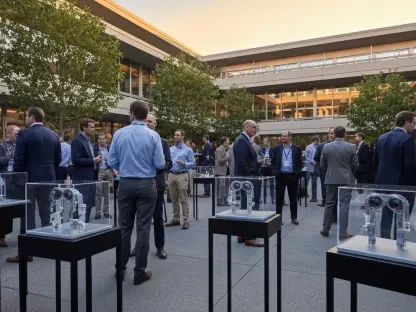Allow me to introduce Katarina Railko, a seasoned hospitality expert with a deep background in travel and tourism. Katarina has honed her expertise in the entertainment and events sector, often lending her insights at expos and conferences. Today, we dive into an exciting collaboration between a pioneering restaurant chain and a family-owned Spanish wine producer, exploring how this partnership brings unique wines to diners nationwide through an innovative, sustainable format. Our conversation touches on the inspiration behind this alliance, the distinct characteristics of the featured wines, and the impact of eco-friendly wine service on the guest experience.
What sparked the idea for this unique partnership between a restaurant brand and a family-owned Spanish wine producer to introduce premium wines on tap?
I’m thrilled to talk about this collaboration. The restaurant brand has always aimed to transport guests to wine country through their dining experience, and partnering with a family-owned Spanish wine producer was a natural fit. The inspiration came from a shared passion for showcasing world-class wines in a way that feels fresh and accessible. The producer’s dedication to celebrating Spain’s ancient vineyards and indigenous varieties aligned perfectly with the restaurant’s mission to bring global wine stories to the table.
How does this collaboration stand out in terms of introducing Spanish wines to a broader audience in the U.S.?
This partnership is groundbreaking because it focuses on accessibility and education. The producer has been a pioneer in importing Spanish wines to the U.S. since the late ‘80s, with a mission to highlight Spain as a premier wine region. By bringing these wines to a restaurant setting in an innovative keg format, they’re making it easier for guests to explore varietals they might not encounter otherwise. It’s about breaking down barriers and inviting diners to discover the diversity of Spanish terroirs in a casual, approachable way.
Can you walk us through what makes the coastal influence so significant in shaping the profile of a wine like La Caña Albariño?
Absolutely. La Caña Albariño hails from Rías Baixas in Galicia, a region kissed by the Atlantic Ocean. This coastal influence brings a crisp, saline quality to the wine, almost like a breath of sea air in every sip. You can taste the essence of the reeds and grasses that inspired its name. It’s a perfect reflection of the unique climate there, with cool, wet conditions that give the wine its vibrant acidity and fresh, mineral-driven character.
Let’s dive into Nisia Verdejo. What’s the story behind the century-old vines that contribute to this wine’s distinctiveness?
Nisia Verdejo comes from Rueda, and its story is one of resilience. The wine is made from century-old, bush-trained vines that have miraculously resisted phylloxera, a devastating pest that wiped out many vineyards worldwide. These vines are like living history, standing as rare survivors in a landscape where so much was lost. Their deep roots and age bring a complexity and intensity to the wine, with layers of citrus and herbaceous notes that speak to their enduring strength.
Turning to Triton Tinta de Toro, how do the ancient soils and grape clones used in its production create such a bold profile?
Triton Tinta de Toro, from the Toro region, is a powerhouse. It’s crafted from one of Spain’s oldest clones of Tempranillo, grown in sandy soils that were once ancient seabeds. These soils, combined with the region’s extreme climate, force the vines to dig deep, resulting in concentrated, structured wines with intense fruit and firm tannins. The sandy terrain also naturally protects against pests, allowing the vines to thrive and produce a wine that’s bold, deep, and full of character.
How does serving these wines on tap elevate the dining experience for guests at a restaurant setting?
Serving wine on tap is a game-changer. It ensures the wine stays as fresh as the day it left the vineyard, delivering a true “from the barrel” experience. Guests get to enjoy the purest expression of each varietal without the variability that can come from an opened bottle. Plus, it makes wine feel less intimidating—there’s no ceremony, just a pour straight to the glass. It’s an invitation to explore without pretense, enhancing the relaxed, communal vibe of the dining experience.
What are the broader benefits of using a keg system for wine service, both for sustainability and for the restaurant industry as a whole?
The keg system is a win on multiple fronts. From a sustainability standpoint, one keg holds the equivalent of 26 bottles and can be reused up to 1,500 times, drastically cutting down on glass waste and packaging. It’s a more eco-friendly approach that reduces the carbon footprint of wine service. For the restaurant industry, it’s also cost-effective and efficient, allowing for consistent quality and less waste from oxidized bottles. It’s a forward-thinking model that I believe we’ll see more of in the coming years.
What’s your forecast for the future of wine-on-tap programs in the hospitality industry?
I’m incredibly optimistic about the future of wine-on-tap programs. As diners become more curious about unique varietals and sustainable practices, I think we’ll see this format expand beyond niche concepts to mainstream dining. It aligns with the growing demand for transparency and environmental responsibility in hospitality. With advancements in keg technology and more producers embracing the format, I foresee it becoming a staple, offering guests a closer connection to the vineyard while supporting a greener industry.









